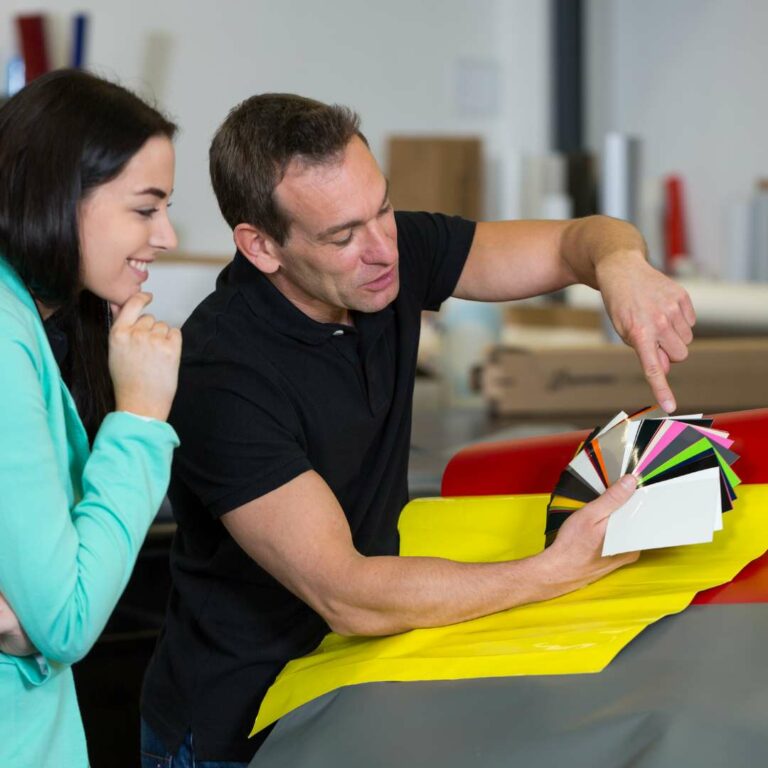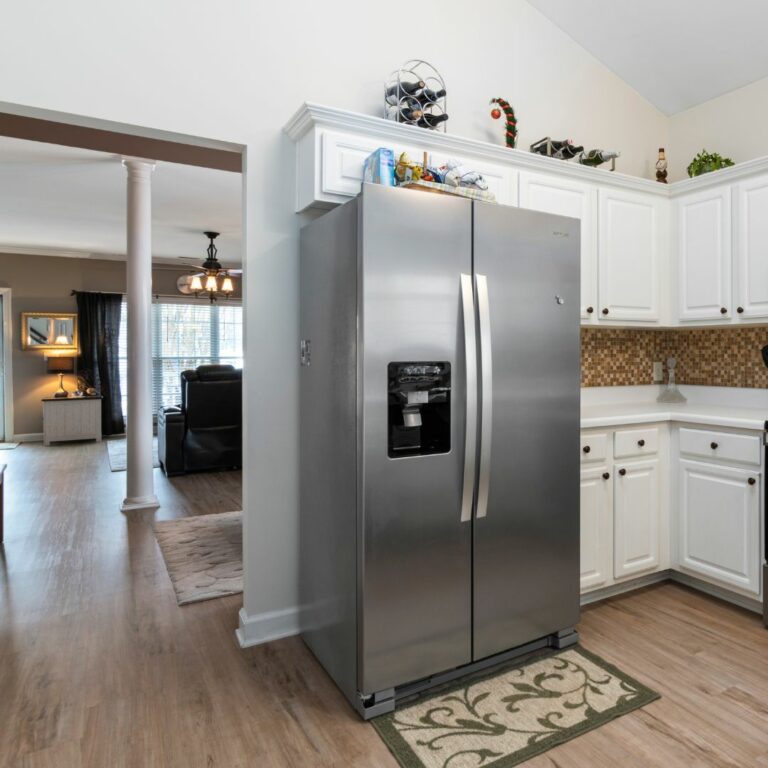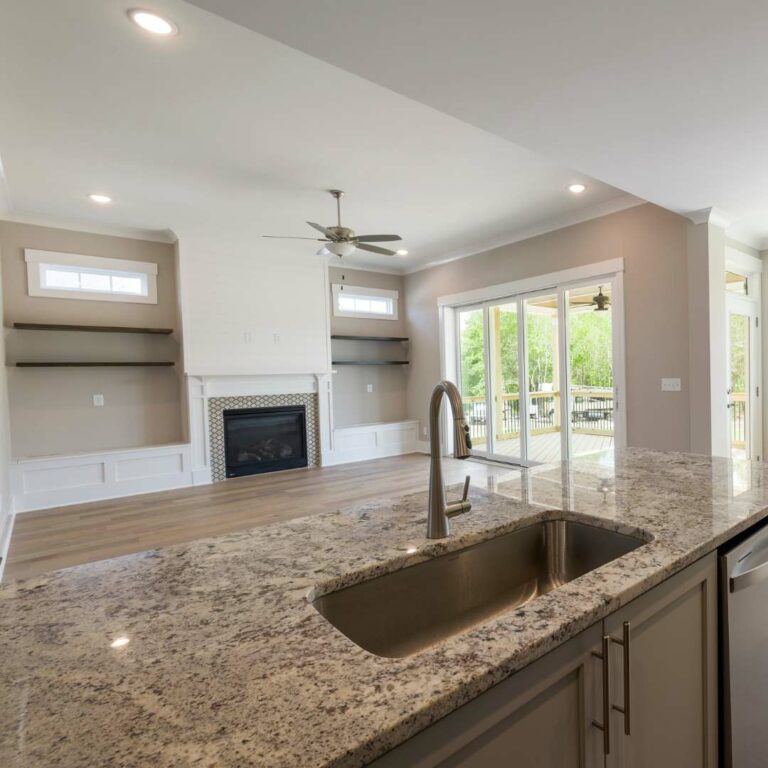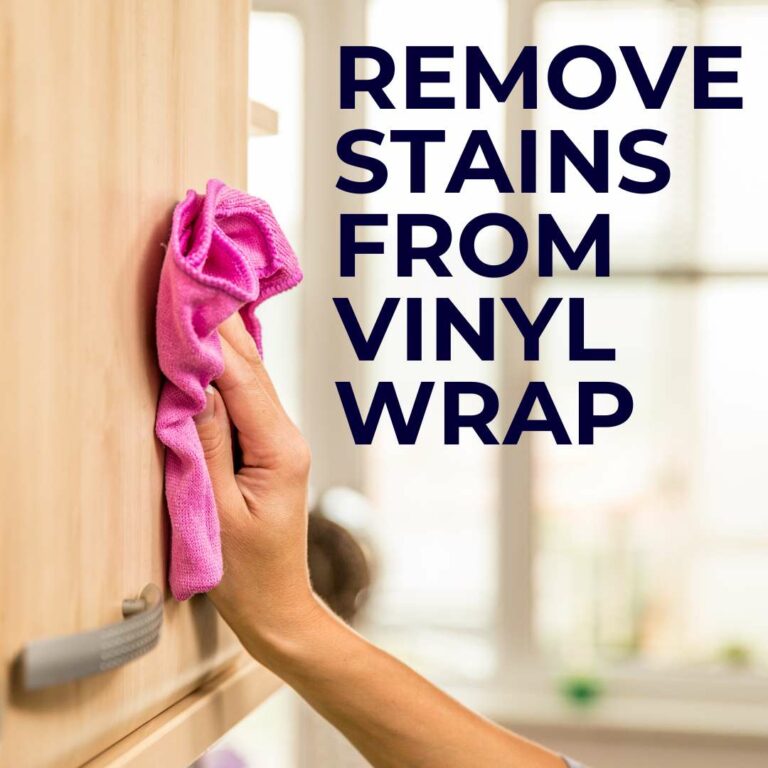When it comes to revamping your kitchen, the choice between painting and vinyl wrapping your cupboards is a crucial decision that can significantly impact the overall look and feel of your space. Each option comes with its own set of advantages and considerations. In this blog post, we’ll explore the pros and cons of both painting and vinyl wrapping to help you make an informed decision tailored to your preferences, budget, and lifestyle.
Vinyl Wrapping Kitchen Cupboards
When contemplating the option of vinyl wrapping kitchen cupboards, durability emerges as a key highlight. Vinyl wrapping is renowned for its ability to provide a resilient protective layer, making it highly resistant to common kitchen challenges such as spills, humidity, and regular cleaning. This durability translates to an extended lifespan for your cupboards, offering a solution that stands the test of time.
The versatility of vinyl is another compelling factor. With a wide variety of colors, patterns, and textures, including realistic wood grain options, vinyl provides an expansive range of aesthetic possibilities. This versatility opens the door to achieving specific looks and styles that may be challenging with traditional paint, allowing for a truly customized and visually stunning kitchen. Take a look at our before and after wrapping gallery for more inspiration.
Ease of maintenance is a notable advantage of vinyl wrapping. The material is inherently low-maintenance, requiring minimal upkeep to preserve its appearance. Unlike painted surfaces, vinyl is less prone to fading and damage, reducing the need for frequent touch-ups or complete repainting. This results in a kitchen that remains vibrant and appealing with minimal effort.
While vinyl wrapping may entail a higher initial cost, it often proves to be a cost-effective choice in the long run due to its durability and reduced maintenance needs. Professional installation is recommended for achieving a flawless finish, ensuring that intricate designs are executed with precision.
Pros:
Speak To Our Team
If you’re interested in interior vinyl wrapping in Dubai, we’ve got your project under wraps!
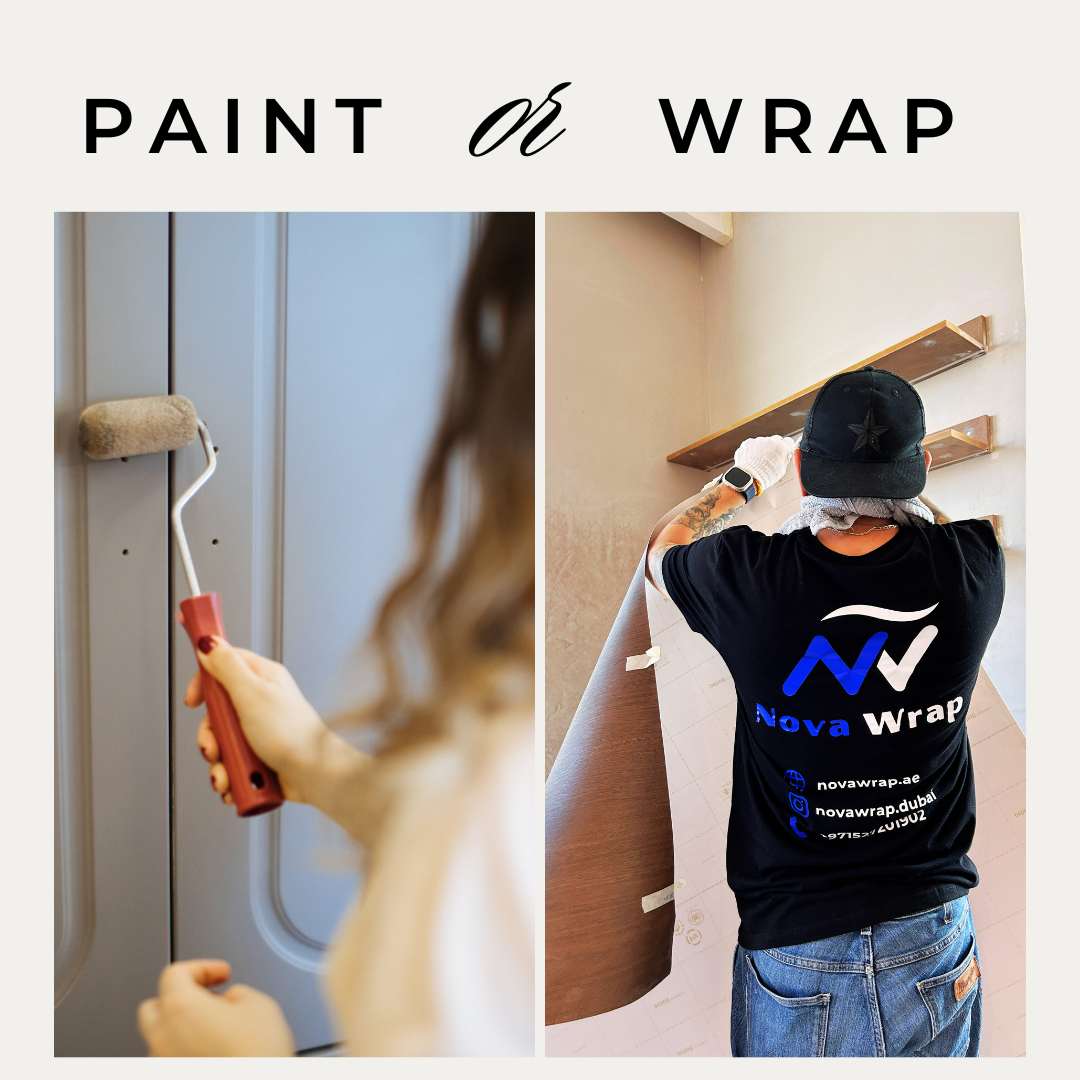
Cons:
Painting Kitchen Cupboards
When considering the option of painting your kitchen cupboards, it’s essential to appreciate the cost-effective nature of this approach. Painting offers an economical means of transforming your kitchen, making it an attractive choice for those working within budget constraints and willing to take on a DIY project. Beyond its financial advantages, painting provides a customizable palette, allowing you to tailor your kitchen’s aesthetic to your preferences. The ability to choose from a wide array of colors and finishes empowers you to create a kitchen that reflects your personal style.
Painting is often perceived as a DIY-friendly project, offering homeowners the opportunity to take an active role in the renovation process. This hands-on approach not only contributes to potential cost savings but also allows for a sense of accomplishment as you witness your kitchen undergo a remarkable transformation under your guidance.
It’s important to note that while painting offers immediate visual enhancements, concerns about durability may arise over time. The painted surfaces are susceptible to wear and tear, particularly in high-traffic areas like the kitchen.
Pros:
Cons:
Can You Paint Wall Tiles?
We often get asked can you vinyl wrap wall tiles and the answer is yes. But, you can also paint wall tiles, and the process involves several key steps to ensure durability and a good finish. It’s a tedious process that requires patience and attention to detail, here’s a brief overview:
- Cleaning and Degreasing: Begin by thoroughly washing the tiles with a degreasing cleaner. This step is crucial to remove any dirt, grease, or residues that might prevent the paint from adhering properly.
- Repairing Damages: Any chips or cracks in the tiles should be filled with a durable repair putty or epoxy. This ensures a smooth surface for painting.
- Sanding: Use sandpaper (around 120-grit) to sand the tiles. This step helps to dull the shiny surface of glazed tiles and creates micro etches for better paint adherence.
- Priming: Apply a high-quality bonding primer to the tiles. This helps the paint stick better and can also hide unwanted colors or designs underneath. It’s recommended to use two coats of primer, allowing it to dry thoroughly between coats.
- Painting: Use special epoxy or tile paints for painting the tiles, as these are made to stick to tile surfaces and are extremely durable. Apply the paint evenly with a roller or brush, and allow it to dry completely. You may need to apply multiple coats for the best finish.
- Sealing: After painting, it’s important to seal the tiles with a polyurethane sealer. This step protects the paint and helps maintain its appearance over time.
While painting tiles can be a budget-friendly alternative to replacing them, it doesn’t last as long as the original tile finish. The paint may wear off over time, especially in high-traffic or high-moisture areas. Painted tiles may also require more maintenance, such as touch-ups or resealing over time. For these reasons, we prefer to vinyl wrap wall tiles.
To Wrap or Paint
In the eternal debate of painting vs. vinyl wrapping kitchen cupboards, the choice ultimately depends on your priorities and preferences. If you’re looking for a cost-effective and DIY-friendly option with a wide range of color choices, painting might be the way to go. However, be prepared for more frequent maintenance and potential repainting in the long run. One other aspect worth considering is the fact that you can paint over vinyl wrap.
On the other hand, if durability, ease of maintenance, and an extensive range of textures and patterns are your priorities, then vinyl wrapping emerges as a strong contender. While the initial cost might be slightly higher, the long-term benefits in terms of aesthetics and longevity can make it a worthwhile investment.
Consider your lifestyle, the level of customization you desire, and your willingness to undertake maintenance when making this crucial decision for your kitchen. Whether you opt for the classic charm of paint or the modern resilience of vinyl, transforming your kitchen cupboards is a rewarding project that can breathe new life into one of the most important spaces in your home.



